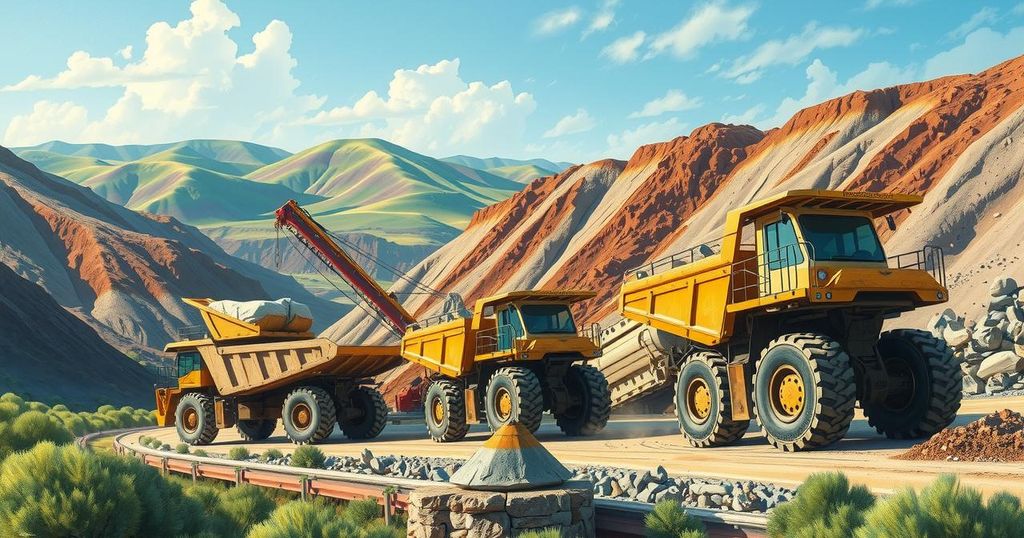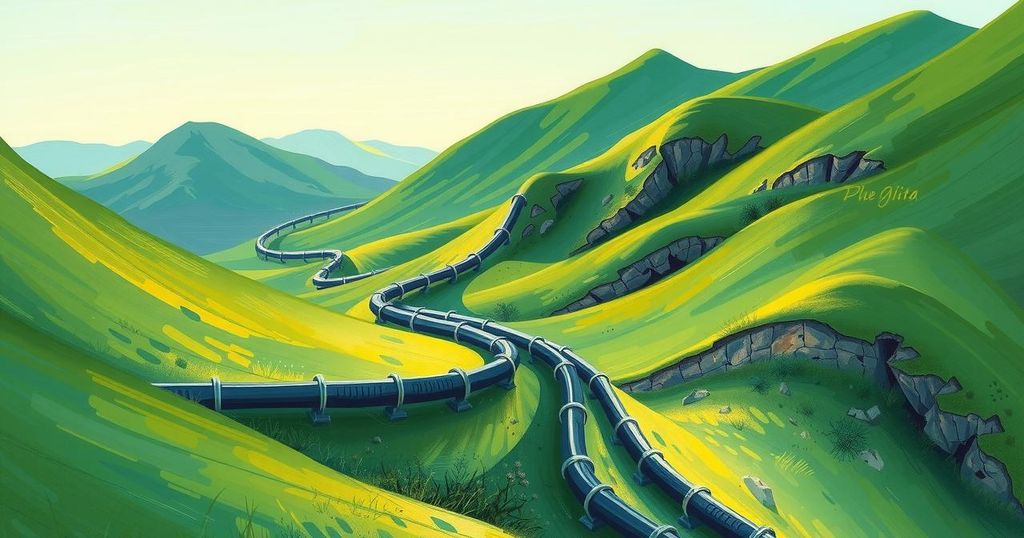The Simandou mining project in Guinea, touted as the world’s largest untapped iron ore deposit, is set to revolutionize the nation’s economy. Despite ambitious plans for rail and port infrastructure, community concerns and infrastructural delays raise questions about its feasibility. Transparency and governance remain contentious issues, with skepticism surrounding job creation and production timelines amidst political maneuvering.
In southern Guinea, the Simandou mountain range harbors the world’s largest untapped iron ore deposits, estimated at 2.8 billion tonnes. Following a significant mining scandal in 2013 linked to the regime of former President Lansana Conté, various attempts to advance production stalled due to political instability and license conflicts. However, Guinea’s ruling junta and new stakeholders assert that this will change with the impending launch of a major mining complex, essential to the country’s economy where mining contributes to 90% of exports.
The ambitious initiative comprises a 650-kilometer railway, three deep seaports under construction, a metallurgical plant, and an extensive asphalt network, all projected for completion by 2040. Authorities emphasize the $20 billion investment could create approximately 60,000 jobs and improve education access for millions in a nation where significant poverty persists. High-budget promotional content on the Guinean presidency’s YouTube account heralds the project as a transformative economic opportunity, likening its potential impacts to those of oil in the Gulf states.
In January, Wabtec, a U.S. rail technology firm, secured a $248 million contract to supply locomotives for the railway connecting the mine to the Atlantic. However, concerns arise as reports indicate that critical infrastructure is still underdeveloped, jeopardizing an October production start date. Other common mining challenges, including funding, safety, and environmental protection, are also raised. Following the junta’s takeover in September 2021, the ownership structure of the megaproject became more intricate, involving partnerships with Rio Tinto and a Singapore consortium.
Concerns over transparency persist within civil society as activists underscore secrecy surrounding the project’s financing. Although Guinea committed to the Extractive Industries Transparency Initiative (EITI) in 2007 to ensure governance improvements, recent contract details related to Simandou remain undisclosed. EITI officials advocate for public access to these contracts to enhance accountability. Protests against inadequate local recruitment led to violence, underscoring community tensions. Reports unveil multiple worker fatalities and undisclosed accidents linked to construction activities, prompting governmental investigations.
While authorities claim reduced carbon emissions due to the superior ore quality, community reports reveal local pollution concerns stemming from construction debris, fueling discontent among residents. Bright Simons from the Imani Centre cautioned that the involvement of two consortiums complicates timelines, projecting delays in production. Social media reflects skepticism regarding the project’s commencement and hints that the current administration may leverage the megaproject for political gain ahead of impending elections. Analysts predict it may be 2028 before credible production is realized.
The Simandou mining project in Guinea promises significant economic potential but faces substantial obstacles. While government officials tout it as a transformative initiative, varying concerns—ranging from safety, environmental impact, to financial transparency—cast doubt on its future. With a complicated ownership structure and hesitance among stakeholders, the predicted timelines appear overly optimistic, suggesting that genuine production may remain years away. The intersection of economic ambition and political motives complicates the narrative surrounding this crucial project.
Original Source: www.theguardian.com




